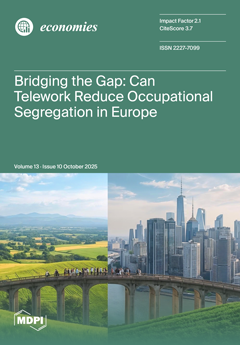Both developed and developing countries increased their energy consumption while continuing to advance economically and financially. In parallel with increasing energy use, the intensification of anthropogenic activities has led to higher greenhouse gas emissions, exposing countries to the challenges of climate change and
[...] Read more.
Both developed and developing countries increased their energy consumption while continuing to advance economically and financially. In parallel with increasing energy use, the intensification of anthropogenic activities has led to higher greenhouse gas emissions, exposing countries to the challenges of climate change and global warming. The environmental degradation resulting from rapid growth in both developed and emerging economies has drawn the interest of scholars, policymakers, and environmental advocates. This study aims to address the relationships between financial development, economic growth, energy consumption, and environmental degradation in G7 and E7 countries. Within this framework, panel cointegration and causality analyses were conducted using annual data from the period between 2000 and 2021 for the relevant countries. The results of the cointegration analysis indicate that the variables move together in the long run in both groups of countries. Furthermore, the long-term relationship coefficients reveal that economic growth and energy consumption contribute to environmental degradation in both G7 and E7 nations. Moreover, the results show that, unlike in E7 countries, financial development in G7 countries exacerbates environmental degradation, while trade openness mitigates it. Panel causality analysis reveals that in E7 countries, changes in financial development influence CO
2 emissions, and variations in CO
2 emissions, in turn, affect economic growth and trade openness. In G7 countries, the analysis results indicate a bidirectional causal relationship between trade openness and CO
2 emissions across the panel. The panel cointegration and causality analyses yield differing results at the country level. Given these findings, it can be recommended that both G7 and E7 countries transition from fossil fuel sources to clean energy sources in conducting economic activities, promote green economy initiatives, and expand the use of green finance instruments to mitigate environmental degradation.
Full article





